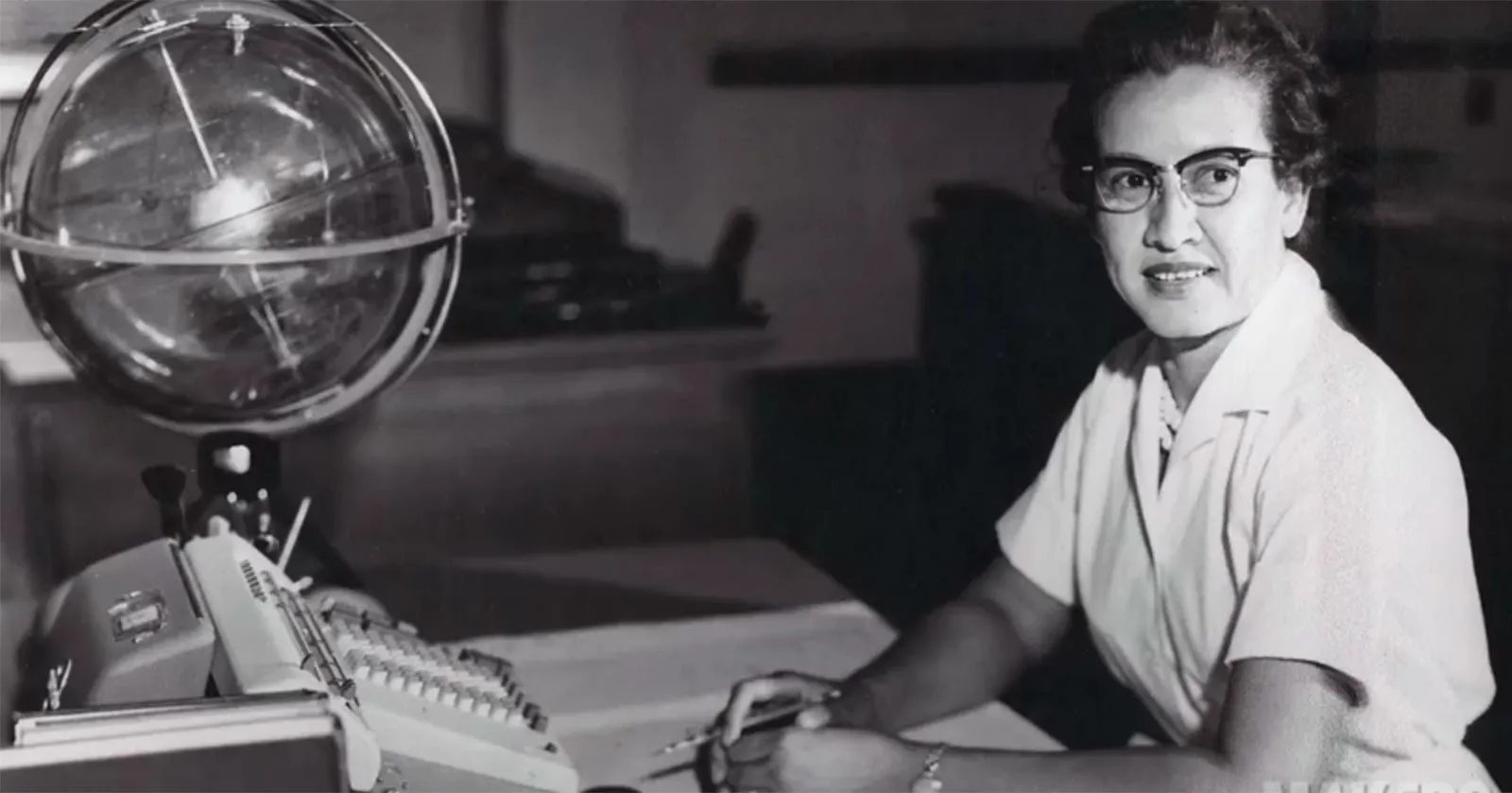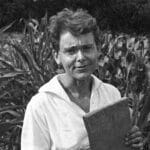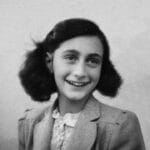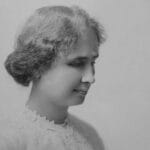Unveiling the Brilliance: 10 Facts About Katherine Johnson
Katherine Johnson wasn’t just a brilliant mathematician; she was a guiding light for NASA during a pivotal era of scientific exploration and societal change. Here’s a glimpse into the remarkable life of the woman whose calculations sent humans soaring into space:
A Prodigy from the Start
- Imagine graduating high school at 10! That was Katherine. This incredible feat hinted at the extraordinary path she was about to embark on.
- By 18, she had earned her college degree, graduating summa cum laude. Talk about a quick learner!
Defying Gravity and Segregation
- In an era when both computers and space travel were in their infancy, Katherine’s sharp mind took center stage at NASA.
- Tasked with calculating complex trajectories for space missions, she faced not only scientific challenges but also the deeply ingrained racial segregation of the time.
- Her meticulous calculations helped ensure the safe journey of countless astronauts, including John Glenn’s pioneering orbit around Earth.
A Legacy Etched in the Stars
- Katherine’s work transcended numbers; it redefined the boundaries of human potential.
- She was a pioneer: the first Black woman to hold the title of NASA engineer.
- Her story, though hidden for decades, finally received global recognition. President Obama awarded her the Presidential Medal of Freedom, a testament to her enduring impact. Universities recognized her with honorary doctorates, and the book and film “Hidden Figures” brought her story to life, inspiring a new generation.
Beyond the Numbers
- Katherine co-authored 26 research reports, demonstrating a commitment to advancing scientific knowledge.
- She dedicated herself to mentoring young minds, encouraging them, particularly women and minorities, to pursue careers in STEM fields. Even in her later years, she remained a fervent advocate for education.
Katherine Johnson: More Than Just Calculations
You might be surprised to learn that Katherine Johnson didn’t invent physical objects in the traditional sense. She wasn’t building rockets or designing spacesuits. Instead, she used her extraordinary mathematical talent to solve incredibly complex problems crucial to space travel. Think of her as a “human computer,” but far more impressive than any computer at the time!
For instance:
- When Alan Shepard became the first American in space, it was Katherine Johnson who calculated his flight path, ensuring his safe return.
- When John Glenn orbited the Earth, a feat fraught with risk, it was Katherine Johnson who double-checked the intricate calculations to guarantee his safe return. Talk about pressure!
But perhaps her most renowned contribution was her work on the Apollo missions:
- Imagine trying to land on the moon – it’s like hitting a moving target in the dark from millions of miles away! Katherine Johnson’s calculations were essential for determining how the lunar module (the part that landed on the moon) could separate from the command module (the part that stayed in orbit) and then safely reconnect afterward. Without her brilliance, the moon landing might have unfolded very differently.
Even beyond these remarkable accomplishments, Katherine Johnson continued to contribute to other NASA programs, such as the Space Shuttle program and the Earth Resources Technology Satellite (Landsat).
The biggest takeaway from Katherine Johnson’s life? It’s about the power of intellect, persistence, and passion to achieve extraordinary things, even when confronting challenges and breaking down barriers. She’s a true inspiration for anyone who dares to dream big and reach for the stars.
Katherine Johnson: Shaping the Destiny of Space Exploration
Katherine Johnson wasn’t merely crunching numbers at NASA; she was shaping the destiny of space exploration. Imagine – this was a time when computers were still in their early stages, and we’re talking about the massive calculations required for space travel. Her work was pivotal for some of America’s most significant moments in space.
Consider:
- Alan Shepard, the first American in space? Katherine Johnson plotted his course.
- John Glenn, the first American to orbit the Earth? It was Katherine’s calculations he trusted above all else. “If she says they’re good,” Glenn famously remarked, “then I’m ready to go.”
But her impact extends far beyond the numbers. This was the 1950s and 1960s, a time when being both Black and a woman meant facing hurdles most of us can’t fathom. Yet, there she was, at the forefront of NASA, shattering those barriers with every equation she solved. She wasn’t just changing the world; she was changing who got to be a part of that world, inspiring countless women and minorities to dream bigger, aim higher, and see themselves in the world of science.
And let’s not forget Apollo 11:
- Neil Armstrong, “one small step” – Katherine Johnson was part of the team that made that giant leap for mankind possible.
- When Apollo 13 encountered peril, it was her expertise that helped guide those astronauts safely back to Earth.
Katherine Johnson’s story is a powerful reminder that brilliance transcends boundaries. It’s a testament to the power of perseverance, the importance of diversity, and the incredible things that unfold when we dare to reach for the stars.
From Segregated Schools to the Stars: Katherine Johnson’s Upbringing
Katherine Johnson’s story begins in White Sulphur Springs, West Virginia, a place that offered both the comforts of home and the constraints of segregation. Growing up, she experienced firsthand the stark inequalities faced by African Americans seeking a quality education. Yet, Katherine possessed an undeniable spark—a natural talent for mathematics that couldn’t be ignored.
Her parents, Joshua and Joylette Coleman, recognized this spark.
- Her father, a handyman at the grand Greenbrier Hotel, and her mother, a staunch advocate for her children’s education, ensured Katherine had every opportunity to learn and grow.
Imagine a young Katherine, consistently surpassing her classmates in those segregated schools. Her teachers, recognizing her exceptional abilities, encouraged her to aim higher, to seek a brighter future through education. To provide these opportunities, the family moved to Institute, West Virginia. This move allowed Katherine to attend high school at West Virginia State College. Even with her obvious intelligence, she couldn’t enroll in the local white high school and had to travel to a different county to continue her education.
Obstacles seemed to fuel Katherine’s determination.
- Graduating high school at the astonishingly young age of 14, she went straight to West Virginia State College. There, she earned degrees in not one, but two subjects: mathematics and French. Her professor, Dr. William W. Schieffelin Claytor, recognizing her extraordinary potential, created a special geometry course just for her.
Her path to NASA wasn’t easy; she faced rejection before finally joining the agency in 1953. As part of a team of brilliant Black women mathematicians, Katherine’s calculations were crucial for the success of early space missions. Her dedication and incredible math skills played a key role in some of NASA’s most groundbreaking achievements.
Katherine’s story resonates even today, a shining example of how talent and perseverance can overcome even the most daunting challenges.
Was Katherine Johnson the First Black Woman at NASA?
Was Katherine Johnson the first Black woman to work at NASA? The answer is complex. While she was undoubtedly a trailblazing mathematician and a vital contributor to early space missions, other African American women worked at NACA, the organization that later evolved into NASA, before her arrival.
Finding comprehensive records about all of the early pioneers at NASA, particularly Black women, can be challenging. It’s like piecing together a puzzle with missing pieces.
However, we do know that Katherine’s impact extended far beyond calculations:
- She was a true “human computer,” tackling the complex calculations essential for sending astronauts safely into space.
- She played a key role in Alan Shepard’s historic flight and John Glenn’s orbit around Earth.
- Her contributions extended to the Apollo 11 moon landing, the Apollo 13 rescue mission, and even NASA’s Space Shuttle program and Landsat.
Katherine Johnson’s story is about so much more than being “first.” She shattered glass ceilings and became a beacon of inspiration for countless aspiring scientists and engineers, especially women and minorities who often faced an uphill battle in those fields.
Even today, the lack of diversity in STEM careers remains a pressing issue, making it crucial to continue sharing stories like Katherine’s. By celebrating these hidden figures, we keep the spark of possibility alive for future generations.
Discover more about inspiring figures in history:
- Uncover fascinating facts about Robert Brown, the renowned botanist whose contributions shaped our understanding of cellular life.
- Dive into the captivating facts about John Nash, the brilliant mathematician whose life inspired the acclaimed film “A Beautiful Mind.”
- Learn facts about Bill Clinton and unravel the intriguing mysteries surrounding his presidency.
- Unlock Water’s Symbolism: A Cross-Cultural Exploration - April 20, 2025
- Identify Black and White Snakes: Venomous or Harmless? - April 20, 2025
- Unlocking Potential: Origins High School’s NYC Story - April 20, 2025
















3 thoughts on “10 Astonishing Facts About Katherine Johnson, NASA’s Human Computer”
Comments are closed.